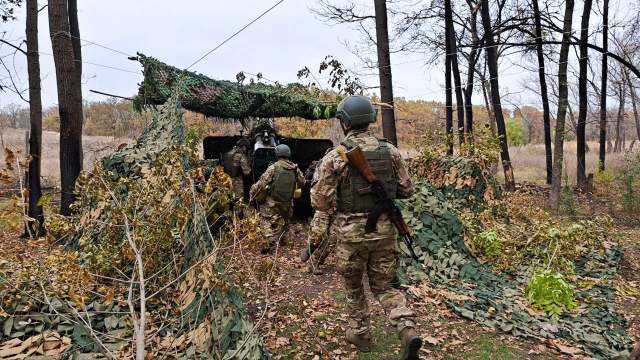How is the liberation of Maryinka going — in the Izvestia report
The basements of the destroyed houses are the main place of shelter and positions of the Ukrainian defense in Maryinka. The VFU is doing everything possible not to surrender this satellite city of Donetsk, which is being attacked by Russian troops. Heavy fighting is also taking place in the Krasnogorovka area. Now most of Maryinka is under the control of the Armed Forces of the Russian Federation, the fighters of the 5th brigade of the 1st Donetsk Army Corps continue to advance and knock the enemy out of its fortifications. Izvestia visited the brigade's positions and observed the fighting with the participation of our tankers and gunners.
Stuck in basements
— We destroy the enemy every day. He is firmly entrenched in the basements. We knock it out, inflicting fire damage with mortars and artillery pieces, then we conduct assault operations in small groups," says an officer of the 5th brigade, a Hero of the DPR with the call sign Prisoner.
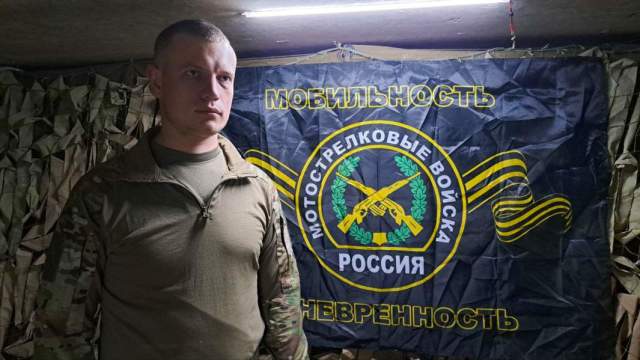
The hero of the DPR with the call sign Prisoner
Image source: Photo: IZVESTIA/Dmitry Astrakhan
According to him, enemy units for the most part consist of mobilized. Our interlocutor attributes this to the fact that the resources of the personnel in the regular units of the VFU are exhausted. At the same time, until recently, the enemy's positions in Marinka were manned by professional military personnel. Ukrainian reservists are capable of conducting defensive battles in positions, but they cannot go into active defense or try to go on a counteroffensive, the Prisoner noted.
— In my direction, from the Ukrainian side, there were also masters who could act in small groups, and tried to recapture the captured positions seven times... Some of the enemies are standing strong, specifically standing, someone is running away. We understand this when we advance, seize the borders and listen to their communication: some do not give up, and some demand evacuation, they say they will now leave the positions. The enemy's superiors, accordingly, threaten to use violence against such servicemen," the Prisoner says.
Accuracy and calculation
At the positions of the brigade artillery, we look at the work of the 152-millimeter Hyacinth-B gun. It is both camouflaged and covered from above with a thick metal mesh — from the actions of enemy drones. Large multicopters with explosive device discharges periodically fly here. In order to effectively fight the Western artillery used by the enemy, Russian gunners have to move closer to the line of contact, so it is necessary to be prepared for such a development of events.
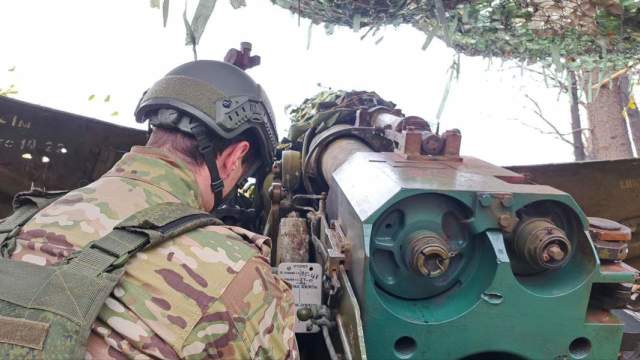
Photo: IZVESTIA/Dmitry Astrakhan
Image source: iz.ru
— Our main task is a counter—battery fight. That is why we have moved a little closer to the front edge so that we can get and hit NATO-style weapons. But the goals are different, there are unplanned ones — such as hidden infantry or enemy equipment. We work, we hit, and after a certain number of shots we perform an anti-fire maneuver, we change positions. And so it is every day," says artillery officer Platon.
He has been fighting since 2016, at the age of 18, and went from loader to commander of a firing platoon.
The gunners themselves also use unmanned reconnaissance in their work. According to Plato, many targets cannot be seen otherwise than from the air. But the officer notes that an experienced scout on the ground can, in some circumstances, better determine the coordinates and give more accurate data. Therefore, when there is an opportunity, it is better to combine old and new methods of work.
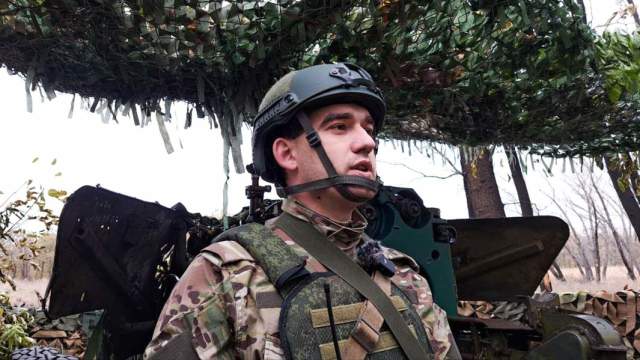
Artillery Officer Plato
Image source: Photo: IZVESTIA/Dmitry Astrakhan
Unmanned armor
Tankers are working closer to the front edge. The T-80 machines are not only dug in, but also covered from above with massive anti-drone structures. They are so soundly and thoroughly made that they cannot be called the fixed folk name "barbecue". Everything is carefully camouflaged from above. The guns are loaded and aimed at the planned targets, so if necessary, the first shot from a closed position can be fired immediately, without unmasking the tank by turning on the engine and without wasting time on power supply.
A kamikaze drone squad is on duty nearby. One fighter looks at the device screen to detect the appearance of a video signal from the drone and determine which side and how it comes in. The second one has an "anti—drone" gun in his hands - a volunteer model that is as cheap as possible and aimed at combating FPV drones. In a plastic case there is a "jammer" that works across a wide sector. The guys have already shot down seven kamikaze drones that threatened tanks.
Photo: IZVESTIA/Dmitry Astrakhan
Image source: iz.ru
— We are preparing a place for ourselves where we will be more or less safe, but we will be able to work freely. When the enemy approaches, I have a picture on the screen, and he tries to land him with a gun. Once it didn't work out, I had to switch to shooting fire. But they were shot down, prevented a direct hit on the car. When tanks leave for a direct collision, then we move to the front line too, there we work not only with a gun, but also with a "drone storm" — a sector jammer — in the direction of the most likely approach," the drone tankers say.
The main method of operation of tanks at the moment remains work from closed firing positions. But if the need arises, the tankers are ready to go into direct tank battle.
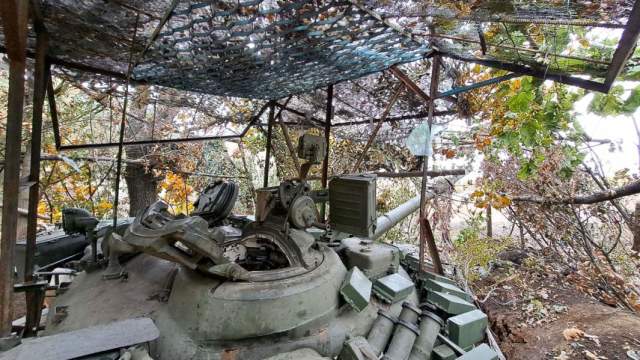
Photo: IZVESTIA/Dmitry Astrakhan
Image source: iz.ru
— A car on kerosene (we are talking about the T-80 gas turbine engine, the rest of the Russian tanks have diesel engines. — "Izvestia") very fast, frisky. This is a plus. The faster you move, the harder it is to hit you, and the "eighty" is exactly like that. If you push the pedal all the way to the floor, it can give you 90 km/h even on the field! Maneuverability is also very good. In the 72's, which we used to be on, the loading of the projectile is faster, but it's not scary," says a tanker with the call sign Boomer.
Hunters of "Leopards"
In Marinka, the enemy has not yet seen modern Western tanks. Boomer says that he studies the characteristics, strengths and weaknesses of this technique, but has no great concerns about it. Moreover, during its time, many crews have experience of fighting "technique against technique".
— The same as with any technique: saw — shot. It is advisable to throw it on again later, if possible. Naturally, the enemy will not be very pleased there, no matter what the equipment is, NATO or not, it makes no difference. When the projectile arrives, it throws up any equipment strongly, at least concusses. If there are cowardly fighters inside the tank, they will immediately get out of the car and run. But no, it's okay — we'll throw them a second shell, it will be fun," explains the basics of tank combat Boomer.
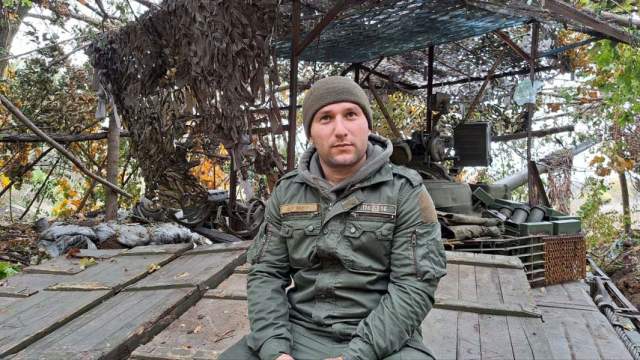
Tankman with the call sign Boomer
Image source: Photo: IZVESTIA/Dmitry Astrakhan
A much bigger problem, according to him, is the massive use of kamikaze drones by the enemy. Boomer shows his massive homemade protection over the tank, which has already saved cars, and praises the factory options, which are now initially installed on many models of equipment.
The fighting for Maryinka continues, its inevitable loss will put the enemy in danger of our troops leaving in the direction of Kurakhovo and will seriously complicate the situation of Ukrainian militants on a large section of the contact line.
Dmitry Astrakhan
